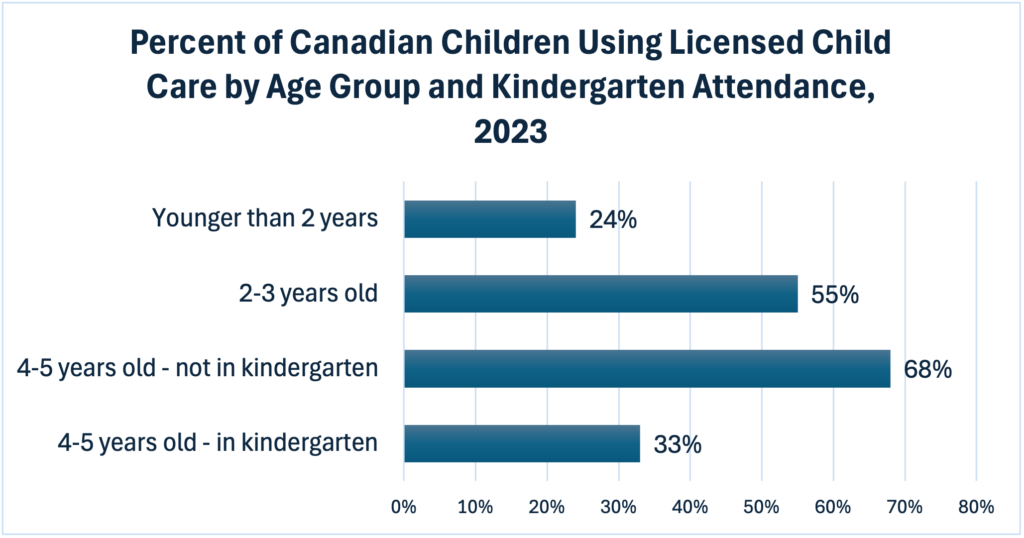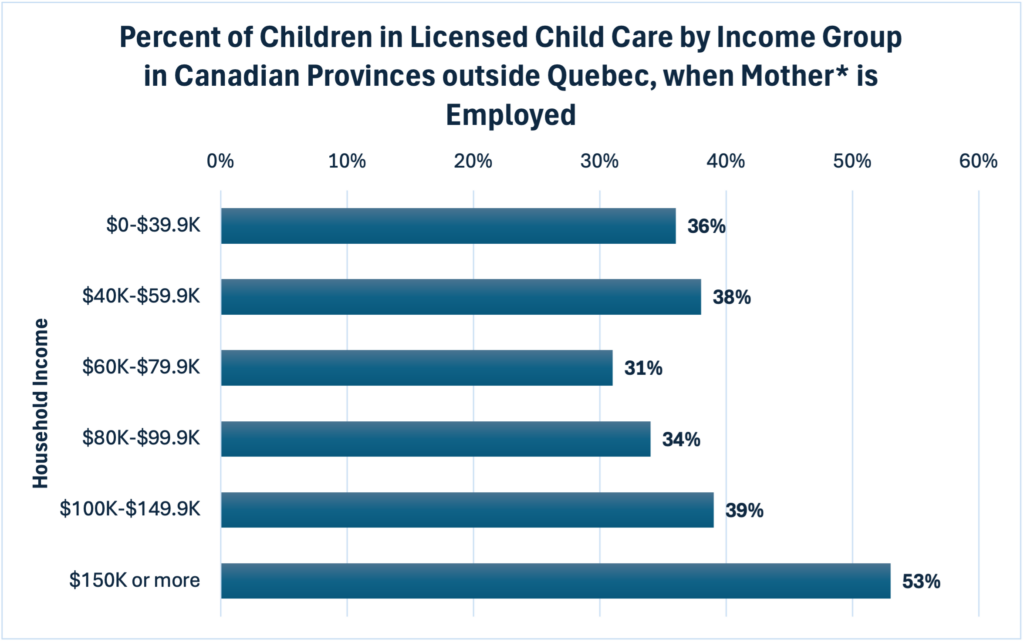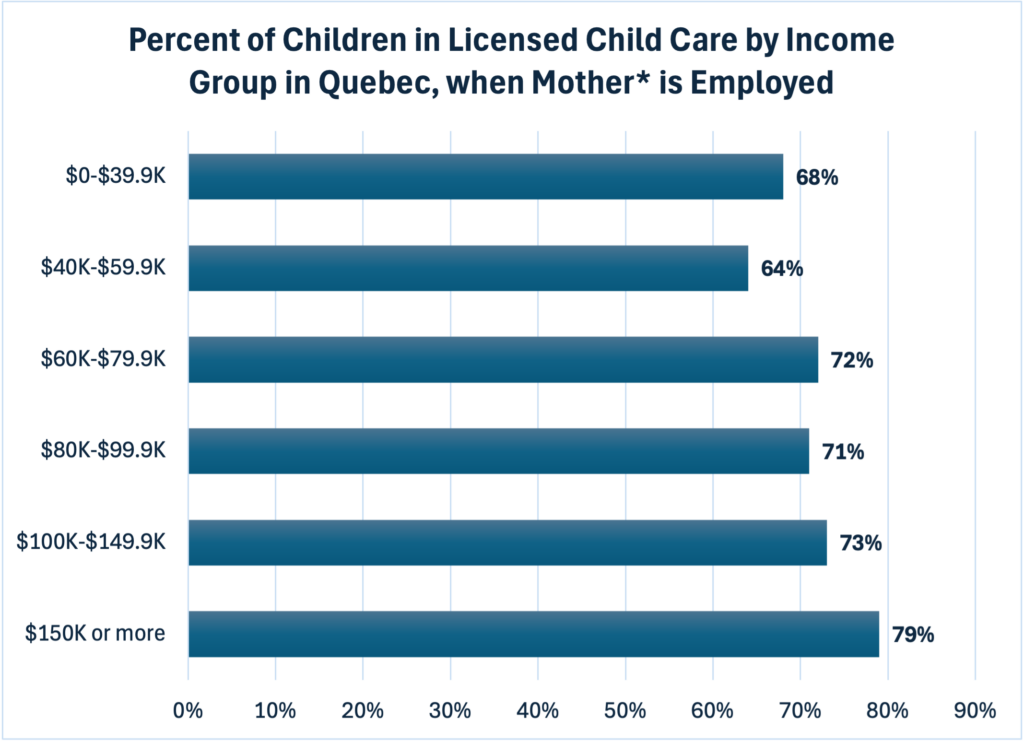Since its beginning, Canada’s plan to build a system of child early learning and child care – the “$10 a day plan” – has been panned by a handful of players. These include spokespeople for some political parties, some child care centre owners, right-wing “pundits”, and social and economic conservatives, all with their own agendas. Relying on misrepresentation of research literature, misinterpretation of public opinion polls and Statistics Canada surveys, the common agenda is to paint the $10 a day plan as a “failure” and “disaster” rather than the first largely successful phase of a Canada-wide project to build a workable child care system for all families and children over time. (Really, it is the second phase because back in 1997, Quebec began to build a largely successful and largely universal low fee child care system of their own).
This blog comments on a policy brief published by Cardus in November 2024. Cardus advertises itself as a non-partisan Christian think-tank; it takes a socially conservative approach and promotes ways of thinking that pre-date the Royal Commission on the Status of Women that reported in 1970.
Cardus would have you believe that very few Canadian children and families benefit from low fee licensed child care. Cardus’ staff members Mitchell and Mrozek have written that: “…most Canadian families receive no benefit from the billions spent – only 29% of children aged 0-12 had access to a licensed space in 2021.” (November 2024). It’s a pity that Mitchell and Mrozak inappropriately use data on children 0-12 years to reach this conclusion. Most of these children (the 6-12 year olds) are not even covered by the new funding programs to make child care universally affordable for families. Cardus should instead have informed themselves with the latest Statistics Canada data (the parent survey in 2023 that looks at children 0-5 years of age). It’s called the Canadian Survey on Early Learning and Child Care. Or, Cardus could have read the report entitled Giving Parents Money Doesn’t Solve Child Care Problems published by the Prosperity Project in September 2024. It provided much of the same data we include in this blog.
Many families already benefit from low fee child care
If Cardus had consulted the appropriate data, they would find out that the truth is somewhat different from their biased conclusion. The latest data are from 2023, two years after the beginning of the $10 a day program and about 25 years since Quebec began phasing in universal child care. There are about 2.2 million children 0-5 years of age in Canada and close to a million of them (938,000 children or 42% of all children) are already using licensed child care.
Families prefer to use licensed child care
In fact, 75% of the children 0-5 years of age who use any kind of non-parental child care in Canada now use licensed child care. About 1.25 million children 0-5 regularly use some form of non-parental child care and 938,000 of them are using licensed child care.
Licensed child care provides strong support of parental employment
A major reason why governments in Canada are spending billions of dollars to provide low fee child care is to support parental employment. And this support of parental employment is happening. According to the recent Statistics Canada parent survey, 59% of parents (mostly mothers) whose main activity is working at a paid job or business already use licensed child care for their young children. Many others – another 115,000 who are on a waiting list – would like to use licensed child care and will happily do so when more supply becomes available.
Child age and availability of kindergarten explain patterns of use of licensed child care
The demand for licensed child care is strongly related to the child’s age. Parents with children less than two years are less likely to use licensed child care, so satisfying the demand for licensed care does not mean having spaces for 100% of children.
When considering child care use, it’s important to take other family or education programs into account. For many families with very young children, parent-only care during maternity or parental leave is their choice. For many children who are already in full-school-day kindergarten at four or five years of age, they do not need or their parents do not want supplementary child care.
Across Canada:
- 24% of children younger than two years of age are in licensed child care. In this age bracket, 62% are in parent-only care, with many of these parents on maternity or parental leave.
- 55% of all children in Canada who are two or three years of age currently use licensed care.
- 68% of all four- and five-year-olds who are not yet in kindergarten currently use licensed care.
- But, when those four- and five-year-olds reach kindergarten, the use of licensed child care drops to 33%.

From the Public User Microdata File of the Canadian Survey on Early Learning and Child Care, 2023.
Licensed Child Care and Low-Income Families
The other main claim in Cardus’ brief is that low-income families do not get much access to child care services when child care is universally funded. The implication is that low-income families would be better served by a targeted child care program. And that universal $10 a day child care will mostly serve affluent families rather than those who have low-incomes.
There are two problems with this. First, the use of licensed child care by low-income families is already larger than you might imagine. In Canada outside Quebec 36% of children with employed mothers from the lowest income group use licensed care. And in Quebec, 68% of children with employed mothers from the lowest income group are in licensed child care.
Second, Cardus has identified the wrong culprit for the important inequities that remain. It is market-driven child care that disadvantages low-income families. It is universal child care that does a better job of welcoming the participation of low-income children to licensed child care.
We can see this by comparing access to licensed child care for different income groups where the mother is employed in provinces outside Quebec to the same data from Quebec. Two conclusions are obvious in the charts below. First, in Quebec, a much greater percentage of children from these low-income families are able to access licensed child care than is the case in the rest of Canada’s provinces. Second, the gap in access between the lowest and highest income groups is much smaller in Quebec than it is in the rest of Canada. As before, this data is from Statistics Canada’s recent parent survey.
What’s the explanation? When child care fees were uncontrolled (as they were in Canada outside Quebec until 2021 or 2022) many families have found licensed child care to be completely unaffordable. Most low-income families were squeezed out. Targeted child care subsidies were not enough to reverse this trend. Naturally, the majority of child care users were from more affluent families. But this was a result of the mostly unrestricted operation of the free market in child care, not the result of a massive program to lower fees.

From the Public User Microdata File of the Canadian Survey on Early Learning and Child Care, 2023.
Note: * The vast majority of parents responding to the survey were mothers

From the Public User Microdata File of the Canadian Survey on Early Learning and Child Care, 2023.
Note: * The vast majority of parents responding to the survey were mothers
As Cardus would know if they had looked at the federal-provincial-territorial agreements that have brought us the $10 a day child care program, improved equity in access for children from different backgrounds is a key objective of the federal program. There are substantial federal, provincial and territorial efforts to ensure that new child care capacity is directed towards underserved populations – low income children, vulnerable children, children from diverse communities, children with special needs, and Francophone and Indigenous children. Still, there is too little access to licensed child care for low-income families – on this we agree with Cardus. But eliminating funding support for child care services and instead paying money to families to stay at home is the opposite of a solution to this problem.
Cardus wants to make child care unaffordable again
Cardus does not really want financial support for licensed child care at all. Instead, Cardus wants us to return to some version of Stephen Harper’s Universal Child Care Benefit. They estimate that if the federal spending on the $10 a day child care program was divided equally amongst families instead of going directly to day care centres to lower fees, each family would receive $3,869 per child, per year. But, right now, families using low fee child care are receiving $5,000 – $15,000 in child care fee reductions. With the end of direct funding of child care, child care fees would soar and nearly a million families would be much worse off than they are currently. Child care would be unaffordable once again, and mothers would be squeezed out of employment by high fees. How is that a sensible and affordable child care policy? No wonder 75% of Canadians think that a Conservative government, if elected, shouldn’t end the $10 a day child care program.
There Is still a lot of work to do to build a $10 a day child care program for all the families that want to use it – especially in expanding the qualified workforce and the supply of services. But already many Canadian children and families are much better off than they were in 2021. The priority now is to finish the job of providing affordable, accessible, quality child
